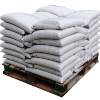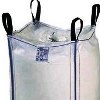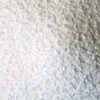| Anmol Chemicals is the pioneer manufacturers of Potassium carbonate, Pharmaceutical Excipients Food & Flavor chemicals in India. We offer Halal and Kosher Potassium carbonate made in an ISO9001, ISO22000 (FSSC22000) cGMP and GLP certified facility. Our group has several manufacturing facilities spread across the world, supported by toll manufacturers and representatives in UAE, Europe, Africa, USA, China and has several associated manufacturing facilities spread across India. All the Information on Physics, Chemistry, Applications, Uses and Technology on Manufacture of Potassium carbonate is in these pages. |
| The units in the group have one or more of the certifications like FDA GMP, ISO 9001, ISO 22000, HACCP, REACH, Kosher & Halal and DMF support is available. |





Potassium Carbonate SDS GHS of Manufacturers
Potassium Carbonate SDS GHS, MSDS Sheet, Material Safety Data Sheet
Section 1: Product And Company Identification
Product Name: Potassium Carbonate
Chemical Family: Metallic Carbonate
Recommended usage: Industrial Manufacturing.
Section 2: Hazards Identification
GHS, Globally Harmonized System Classification in accordance with 29 CFR 1910
Hazard Class and Category Code(s), Regulation (EC) No 1272/2008 (CLP)
Acute toxicity, oral Category 4
Skin corrosion/irritation Category 2
Serious eye damage/eye irritation Category 2A
Specific target organ toxicity, single exposure; Respiratory tract irritation Category 3
Labeling Regulation EC 1272/2008 (CLP) & GHS
GHS Label Elements  None |
Signal Words: Warning
Hazards statements:
H302 Harmful if swallowed.
H315 Causes skin irritation.
H319 Causes serious eye irritation.
H335 May cause respiratory irritation.
Precautionary statements:
P261: Avoid breathing dust/fume/gas/mist/vapors/spray.
P262: Do not get in eyes, on skin, or on clothing.
P264: Wash … thoroughly after handling.
P270: Do not eat, drink or smoke when using this product.
P280: Wear protective gloves/protective clothing/eye protection/face protection.
P281: Use personal protective equipment as required.
P330: Rinse mouth.
P362: Take off contaminated clothing and wash before reuse.
P301+312: IF SWALLOWED: Call a POISON CENTER or doctor/physician if you feel unwell.
P302+P352 - IF ON SKIN: Wash with plenty of soap and water.
P303+P361+P353 - IF ON SKIN (or hair): Remove/Take off immediately all contaminated clothing. Rinse skin with water/shower.
P304 + P340 - IF INHALED: Remove victim to fresh air and keep at rest in a position comfortable for breathing.
P305 + P351 + P338 - IF IN EYES: Rinse cautiously with water for several minutes. Remove contact lenses, if present and easy to do. Continue rinsing.
P332+313: If skin irritation occurs: Get medical advice/attention.
P337+313: If eye irritation persists get medical advice/attention.
P501: Dispose of contents/container to an approved agent.
Classification according to EU Directives 67/548/EEC or 1999/45/EC:
Xn Harmful R22, R36/37/38
For the full text of the H-Statements & R-phrases mentioned in this Section, see Section 16.
Section 3: Composition/Information On Ingredients
Chemical Name: Potassium Carbonate
CAS#: 584-08-7
EINECS EC Number: 209-529-3
Molecular Formula: K2CO3
Molecular Weight: 138.21
Concentration: 100%
Section 4: First Aid Measures
Eye Contact: Immediately flush with copious amounts of water for at least 15 minutes holding the eyelids apart to insure flushing of entire surface.
Skin Contact: Wash contaminated area with copious amounts of water for at least 15 minutes.
Inhalation: Remove to fresh air. Resuscitate if breathing stops. Seek immediate medical attention.
Ingestion: DO NOT INDUCE VOMITING. Seek medical attention.
Section 5: Fire Fighting Measures
Extinguishing Media: Dry chemical, carbon dioxide, foam, water.
Flash point: Not Available
Upper Flammable Limit: Not Available
Lower Flammable Limit: Not Available
Auto ignition Temperature: Not Applicable
Protective Equipment: Firefighters must wear appropriate breathing apparatus and clothing. Prevent wash water entering drains.
Section 6: Accidental Release Measures
Personnel Precautions: Use proper personal protective equipment.
Spill Cleanup Measures: Use appropriate safety equipment.
Small spills, sweep up and put into approved DOT containers for disposal or reuse.
Large spills, do not allow to enter waterways, sweep or shovel into approved DOT containers for reuse or disposal. Avoid dust formation. Avoid breathing vapours, mist or gas. Ensure adequate ventilation. Evacuate personnel to safe areas. Avoid breathing dust.
Section 7: Handling and Storage
Handling: Avoid ingestion. Practice reasonable caution and personal cleanliness. Avoid skin and eye contact.
Storage: Store Potassium carbonate in a cool, dry, well ventilated place. Keep container tightly closed and away from incompatible materials.
Section 8: Exposure Controls, Personal Protection – Exposure Guidelines
Engineering Controls: Provide mechanical ventilation to prevent dust concentrations, and to reduce potential exposure.
Personal Protective Equipment: Chemical resistant clothing is recommended including glove, apron and goggles.
Respiratory Protection: Recommend NIOSH approved dust respirator.
Exposure Limits: Not Available
Chemical Name -------- ACGIH TLV-TWA --- OSHA PEL-TWA
Potassium Carbonate -- Not Determined -- Not Determined
Section 9: Physical And Chemical Properties
Physical State: Potassium carbonate is solid
Odor And Appearance: White free flowing powder, odorless.
Odor Threshold: Not Available
Density: 2.43 gm/cm3 at 60C
Boiling Point: Not Available
pH: 11 to 13
Evaporation Rate: Not Available
Melting Point: 891C
Freezing Point: Not Available
Density: 2.428 @ 19C
Vapor Density: Not Available
Vapor Pressure: Not Available
Flash Point: Not Available
Section 10: Stability And Reactivity
Chemical Stability: Potassium carbonate is stable.
Hazardous Polymerization: Will not occur.
Conditions of Chemical Instability: Incompatible Substances: Avoid simultaneous presence of this product and Lime dust. The combination of these chemicals in presence of water or perspiration can cause the formation of caustic potash.
Section 11: Toxicological Information
LD50 Oral - rat - 1.870 mg/kg
LD50 (Dermal Rabbit) Not Determined
LC50 (Inhalation Rat) Not Determined
Effects Of Acute Exposure: Not Available
General Irritancy of Product: Severe
Carcinogenicity: No component of this product present at levels greater than or equal to 0.1% is identified as probable, possible or confirmed human carcinogen by IARC, NTP, ACHIH & OSHA.
Section 12: Ecological Information
Toxicity to fish: LC50 - Pimephales promelas (fathead minnow) - < 510 mg/l - 96 h
Environmental Fate: Not Available
Section 13: Disposal Considerations
Waste Disposal: All waste should be disposed of according to Federal, Provincial and local regulations. Containers should NOT be reused. Containers Potassium carbonate should be disposed of in accordance with government regulations.
Section 14: Transport Information
TDG Classification: Not Regulated
DOT UN Number: Not Regulated
ADR/RID: Not dangerous goods
IMDG: Not dangerous goods
IATA: Not dangerous goods
Section 15: Regulatory Information
USA:
SARA 302: No chemicals in this material are subject to the reporting requirements of SARA Title III, Section 302.
SARA 313 Components:
Not regulated.
SARA 311/312 Hazards:
Acute Health Hazard
Massachusetts Right To Know Components:
No components are subject to the Massachusetts Right to Know Act.
Pennsylvania Right To Know Components:
Potassium Carbonate CAS#: 584-08-7
New Jersey Right To Know Components:
Potassium Carbonate CAS#: 584-08-7
California Prop. 65 Components:
This product does not contain any chemicals known to State of California to cause cancer, birth
defects, or any other reproductive harm.
OSHA PSM TPQ: Not listed.
Toxic Substances Control Act (TSCA): CAS# 584-08-7 is listed on the TSCA inventory.
Comprehensive Environmental Response Compensation Liability Act: (CERCLA):
Not regulated.
HMIS (Perceived): Health hazard: 2, Flammability: 0,
Physical Hazard: 0
NFPA (Perceived): Health hazard: 2,
Fire Hazard: 0,
Reactivity Hazard: 0
Canada Workplace Hazardous Information Systems Data (WHMIS):
Class ID Class Work Place Hazard
D-2-B Materials Causing Other Toxic Effects - Toxic Skin and eye irritant
Section 16: Additional Information
EINECS EC Number: 209-529-3
H302 = Harmful if swallowed.
H315 = Causes skin irritation.
H319 = Causes serious eye irritation.
H335 = May cause respiratory irritation.
Xn = Harmful
R22 = Harmful if swallowed.
R36/37/38 = Irritating to eyes, respiratory system and skin.
Disclaimer:
***************************
Our company provides this Potassium carbonate SDS information sheet contained herein in good faith but makes no representation as to its comprehensiveness or accuracy. Potassium carbonate MSDS document is intended only as a guide to the appropriate precautionary handling of the material by a properly trained person using this product. Individuals receiving the information must exercise their independent judgment in determining its appropriateness for a particular purpose.
****************************
Potassium Carbonate Manufacturers
Anmol Chemicals
S-8, SARIFA MANSION, 2ND FLANK ROAD, CHINCHBUNDER, MUMBAI 400009, INDIA
TEL: (OFFICE) 91-22-23770100, 23726950, 23774610, 23723564. FAX: 91-22-23728264
e-mail: anmolc@mtnl.net.in

Exports to USA, Canada, UAE, Dubai, South Africa, Tanzania, Kenya, Nigeria, Egypt, Uganda, Turkey, Mexico, Brazil, Chile, Argentina, Europe Netherlands, Italy, Spain, Germany, Portugal, France, Malaysia, Indonesia, Thailand, Vietnam, Korea, Japan, etc.
Copyright and Usual Disclaimer is Applicable January 31, 2022